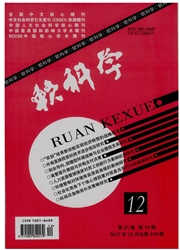

 中文摘要:
中文摘要:
将传统的买方企业求助于后备供应的模式扩展到供应商自身求助于后备供应的模式,研究买方企业通过设计订货合同迫使供应商在发生中断时求助于后备供应的问题.运用动态规划建立了供应商和买方企业两阶段博弈的订货和生产决策模型,研究了买方企业的订货合同设计方法,分析了供应商怎样组织生产以及选择购买后备产品还是支付缺货罚金的决策问题.得到了面对不可靠供应商时的最优订货合同,并发现当单位产品收益大于后备产品的单位购买成本时,无论供应可靠性高低,买方企业都应向供应商提出等于市场需求量的订货量;否则,最优订货量随单位缺货罚金递减,甚至低于需求.
 英文摘要:
英文摘要:
The traditional mode in which the buying firm resorts to backup supply is extended to the mode in which the sup- plier resorts to backup supply. The problem how to design contracts to force the supplier to turn to backup supply is studied. Dynamic programming is used to establish ordering and production decision models of the suppliers and the buying firm' s two-stage game. Both the ordering contracts designing of the buying firm, and the production organization and the selection between buying backup productions and paying penalty of the supplier, are analyzed. Besides the optimal ordering con- tracts, some other conclusions are found, that when the profits an unit pproduct brings to the buying firm is larger than an u- nit cost of backup product, regardless of the supplier~ rehability high or low, the buying firm should order from the supplier with a quantity equal to the demand; when it is not larger, the optimal order quantity is decreasing with the unit penalty of shortage, even less than the demand.
 同期刊论文项目
同期刊论文项目
 同项目期刊论文
同项目期刊论文
 A note on Modelling an industrial strategy for inventory management in supply chains: The ';consignm
A note on Modelling an industrial strategy for inventory management in supply chains: The ';consignm 期刊信息
期刊信息
